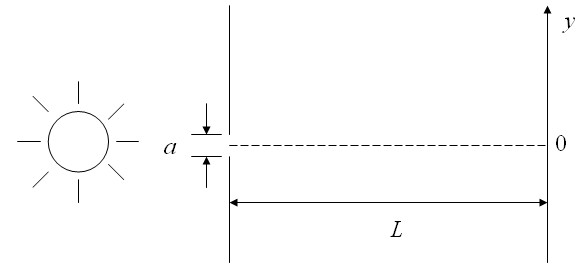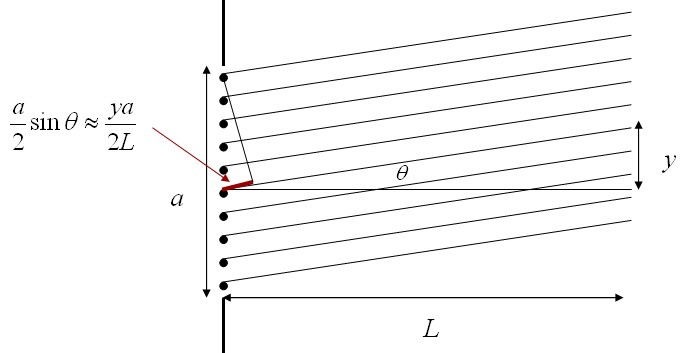Single slit experiment
|
In a single slit experiment, waves pass through a narrow slit of width $a$. The interference pattern is observed on a screen that is a distance $L$ from the slit.

The small divisions on the scale on the right represent mm.
| |
|

A single slit can be thought of as consisting of many small sources. These sources are represented by the dots in the diagram. The amplitude of the waves from each of the small sources is (E0/a)dy. The waves from each of the sources will have a different phase when they arrive at the screen depending on the angle θ. This phase is -2πysin(θ)/λ = -βy/a, where β is a constant, β = 2πasin(θ)/λ. The contributions to the total amplitude from all of the sources is given by the following integral.
Performing the integration gives,
| E = |
|
eiωt(eiβ/2 - e-iβ/2) = |
|
eiωtsin(β/2) |
The squared amplitude is,
Since the intensity is proportional to the squared amplitude,
Far field
In the far field, where $L > > \lambda$ and $L > > y$, destructive interference will take place when $n\lambda=\frac{ay}{L}$ where $n$ is an integer, $n\ne 0$.
| 
